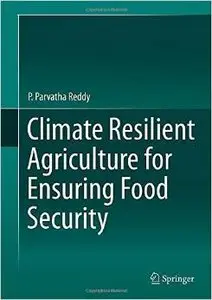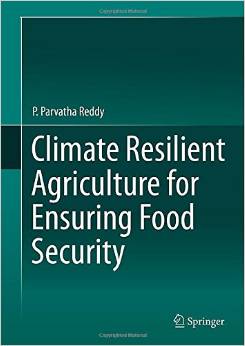Climate Resilient Agriculture for Ensuring Food Security by P. Parvatha Reddy
English | 2014 | ISBN: 8132221982 | 373 pages | PDF | 8,4 MB
English | 2014 | ISBN: 8132221982 | 373 pages | PDF | 8,4 MB
Climate Resilient Agriculture for Ensuring Food Security comprehensively deals with important aspects of climate resilient agriculture for food security using adaptation and mitigation measures. Climatic changes and increasing climatic variability are likely to aggravate the problem of future food security by exerting pressure on agriculture. For the past few decades, the gaseous composition of the earth’s atmosphere has been undergoing significant changes, largely through increased emissions from the energy, industry and agriculture sectors; widespread deforestation as well as fast changes in land use and land management practices. Agriculture and food systems must improve and ensure food security, and to do so they need to adapt to climate change and natural resource pressures, and contribute to mitigating climate change. Climate-resilient agriculture contributes to sustainably increasing agricultural productivity and incomes, adapting and building resilience to climate change and reducing and/or eliminating greenhouse gas emissions where possible. The information on climate resilient agriculture for ensuring food security is widely scattered. There is currently no other book that comprehensively and exclusively deals with the above aspects of agriculture and focuses on ensuring food security. This volume is divided into fourteen chapters, which include the Introduction, Causes of Climate Change, Agriculture as a Source of Greenhouse Gases, Impacts of Climate Change on Agriculture, Regional Impacts on Climate Change, Impacts on Crop Protection, Impacts on Insect and Mite Pests, Impacts on Plant Pathogens, Impacts on Nematode Pests, Impacts on Weeds, Impacts on Integrated Pest Management, Climate Change Adaptation, Climate Change Mitigation, and A Road Map Ahead. The book is extensively illustrated with excellent photographs, which enhance the quality of publication. It is clearly written, using easy-to-understand language. It also provides adoptable recommendations involving eco-friendly adaptation and mitigation measures. This book will be of immense value to the scientific community involved in teaching, research and extension activities. The material can also be used for teaching post-graduate courses. It will also serve as a very useful reference source for policy makers.



